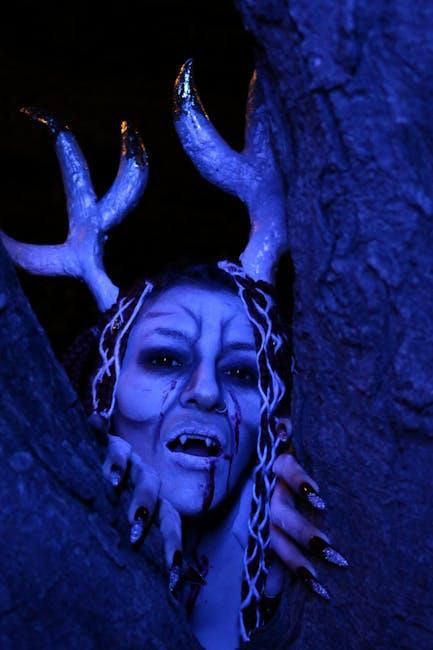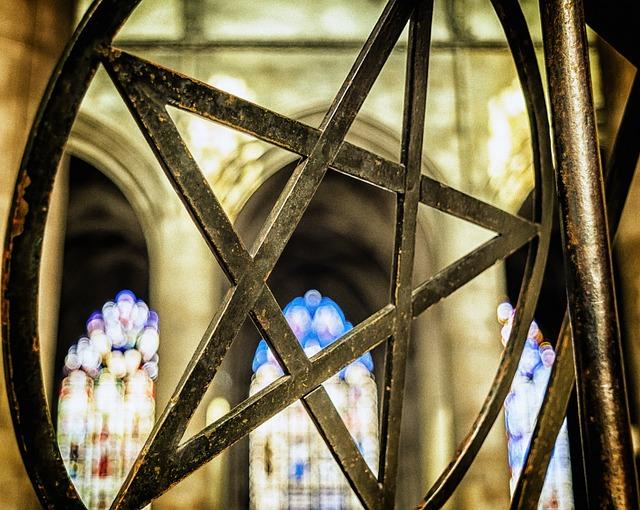In the shadowy realms where myth and reality entwine, “The Witcher” series carves its legendary path with the clash of steel and the shimmer of enchantment. As Geralt of Rivia roams a world teeming with peril and wonder, fans are drawn not only to his brooding presence but to the intricate dance of his swordplay and the mystique of the creatures he encounters. This article delves into the secrets behind the artful choreography of Geralt’s battles and the enchanting lore of the magical beings that populate his universe. Join us as we explore the craftsmanship and creativity that bring these elements to life, captivating audiences and weaving a spellbinding tapestry of adventure.
Mastering the Blade: Techniques Behind Geralts Iconic Swordplay
Geralt of Rivia’s swordplay is an art form, blending finesse and ferocity with a touch of the supernatural. His technique is grounded in a deep understanding of both human and monster physiology, allowing him to strike with precision and power. Key elements include the fluidity of motion and the ability to adapt to any foe. Geralt employs a unique blend of styles, combining swift, lethal strikes with defensive maneuvers that mirror a dance of death.
- Footwork: Essential for balance and agility, enabling Geralt to move swiftly around his opponent.
- Grip and Stance: A relaxed grip allows for quick changes in direction, while a wide stance provides stability.
- Parries and Ripostes: Mastering the art of deflection, Geralt can counterattack with precision.
- Use of Signs: Incorporating magical abilities, such as Aard or Igni, adds an unpredictable element to his combat style.
The combination of these techniques makes Geralt a formidable opponent, able to face any challenge with grace and lethal efficiency.

Unveiling the Bestiary: Understanding The Witchers Magical Creatures
Within the rich tapestry of The Witcher’s universe lies a fascinating array of magical creatures, each with its own lore and mystique. These beings are not merely obstacles for Geralt of Rivia but are intricately woven into the world’s narrative and ecology. From the eerie Noonwraiths, who haunt the fields under the blazing sun, to the cunning Leshen, guardians of the forest, understanding these creatures requires both knowledge and strategy.
- Vampires: More than just bloodsuckers, they possess unique hierarchies and abilities.
- Griffins: Majestic yet deadly, these creatures demand respect and tactical prowess.
- Drowners: Common yet perilous, lurking in the murky waters of the Continent.
Each encounter with these mystical entities is a dance of survival and intellect, where knowing their strengths and weaknesses can mean the difference between life and death. The bestiary serves as a vital tool for witchers, offering insights into the habits and vulnerabilities of the magical creatures that roam the land, reminding us of the delicate balance between man and monster.

Crafting Authentic Combat: Insights from the Sets Fight Choreographers
The intricate dance of swordplay in The Witcher series is a testament to the expertise of the fight choreographers who bring Geralt’s battles to life. Their approach to crafting authentic combat scenes involves a blend of historical techniques and imaginative flair. Key elements of their process include:
- Historical Accuracy: Drawing inspiration from medieval martial arts, the team ensures each movement reflects genuine swordsmanship.
- Character Consistency: Every fight sequence is tailored to Geralt’s unique style, blending his witcher training with his personal combat philosophy.
Beyond swordplay, the choreographers also tackle the challenge of integrating magical creatures into combat. Strategies employed to maintain realism while incorporating fantasy elements involve:
- Motion Capture: Using cutting-edge technology to capture realistic movements of mythical beasts.
- Collaborative Design: Working closely with visual effects teams to ensure a seamless blend of live-action and CGI.

Incorporating Fantasy: Tips for Bringing The Witchers World to Life
To truly immerse players and readers in the mystical realm of The Witcher, it’s essential to weave in the rich tapestry of fantasy that defines its world. Start by emphasizing the distinctive landscapes—from the dense forests of Brokilon to the eerie swamps of Velen. Use descriptive language to evoke the atmosphere, allowing the audience to feel the misty air and hear the whispers of ancient magic.
- Focus on Authenticity: Integrate the unique lore of The Witcher, like the Conjunction of the Spheres, to create a believable world where humans and monsters coexist.
- Character Depth: Develop characters with complex backstories and moral dilemmas, reflecting the shades of gray that The Witcher is known for.
- Interactive Elements: Incorporate quests and challenges that require players to use both swordplay and sorcery, mirroring Geralt’s dual expertise.
By combining these elements, you’ll not only capture the essence of The Witcher’s world but also provide an engaging and memorable experience that resonates with fans and newcomers alike.

